October 1 is National Seniors Day and International Day of Older Persons
In honor of National Seniors Day, we are proud to feature our “Senior Changemakers”—individuals whose actions have made a lasting impact on their communities and beyond. These stories, handpicked by our staff, highlight the wisdom, strength, and perseverance of seniors who have led by example. Some of the articles were written by staff members about people close to them, while others were sourced from inspiring accounts found online. Join us in celebrating these remarkable individuals and the legacies they’ve built.
Doris Self
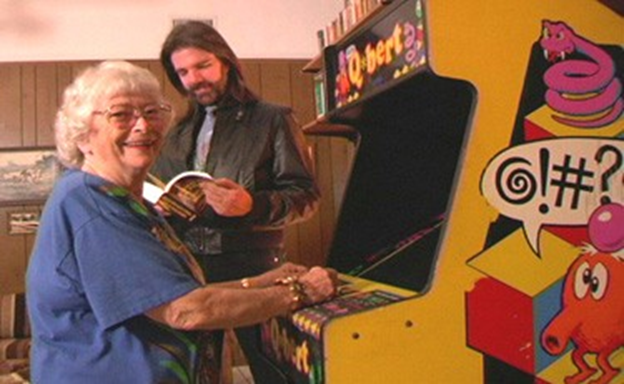
Born September 18, 1925, Doris Self is most known for holding the record of “oldest video game champion” by scoring an unbelievable 1,112,300 points in the arcade game Q*bert at the age of 58 (1984).
At the time, Doris was the top ranked Q*Bert player in the world, achieving scores higher than gamers that were decades younger. Many believed she would never become champion, as younger men who were considered faster and more reactionary, dominated competitive gaming at the time. Not only did Doris face a stigma because of her age and gender, she even played the game differently than the other competitive gamers, never memorizing game patterns. She once stated that she just “goes with the flow”. On her record-breaking day, her competitors thought that she was just an older woman that had a love for the game, little did they know that Doris was used to being a pioneer. Doris was officially recognized as the world’s oldest video game competitor in 2007. A true pioneer in competitive gaming, Doris Self will forever be an inspiration to not only older gamers, but to gamer women around the globe. – Hannah
Source: https://www.gamerwomen.com/doris-self/
Priscilla Sitienei “Gogo”
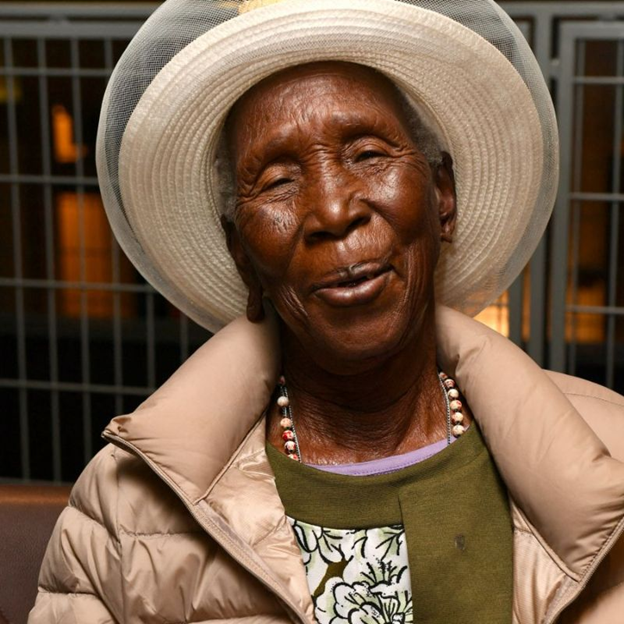
In a classroom in rural Kenya’s Rift Valley, a student takes notes alongside her fellow classmates. She wears the same school uniform – a grey skirt and a green sweater. However, there is one difference. Priscilla Sitienei is more than 80 years older than them. Sitienei turned 99-years-old on February 11, [2022]. She said she went back to class to set a good example for her great grandchildren. She also wants a new career. “I would like to become a doctor because I used to be a midwife,” she told Reuters. She added that her children were supportive of her decision.
Back in 2003, the government of the East African country began helping to pay for the cost of primary schooling. This has allowed some older members of society, who had missed out on education in their younger days, to go back to school. This has given Sitienei more than an education. She has also become a film star.
Sitienei traveled to Paris last year for the launch of a film about her journey. It is titled Gogo, which means grandmother in her native Kalenjin language. She will also be heading to New York City soon for a showing of the film there.
Sitienei is in her sixth year of primary school. She says her aims were far more practical than becoming a movie star.
She said she had the idea when her great granddaughter dropped out of school after getting pregnant. Sitienei said she jokingly asked her great granddaughter if she had money remaining on her school fee, and she said yes. So, Sitienei told her that she would use it to attend school. She said she had hoped that her great granddaughter would continue with her studies. But when she refused, Sitienei decided to go to school herself.
She said she also enjoys other school activities, including physical education classes.
“It keeps me fit,” she said. “I get to jump around, even though not as much as they … do, but I at least move my body. That is my joy.”
Sitienei shares her wide experience and knowledge with the children. Her teachers also use her experience to keep the peace during lessons. Her class teacher, Leonida Talaam, said she uses Sitienei to help control the class. And it works! – Amy L
Source: https://learningenglish.voanews.com/a/kenyan-woman-goes-back-to-primary-school-at-98/6436778.html
Gwyn Haslock – Stephanie
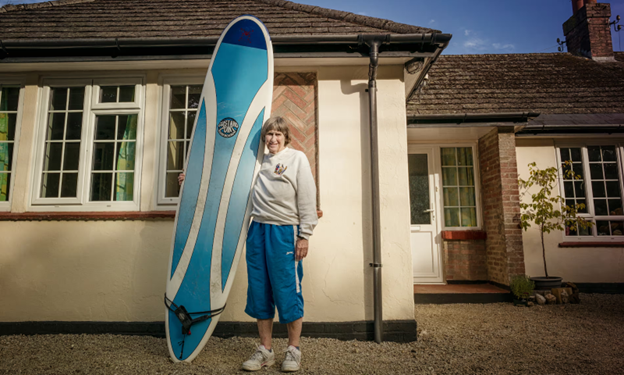
My family always used to go to the sea when I was growing up. We all started surfing in the 1950s on the north coast of Cornwall with wooden belly boards, which are like planks of wood. Then the lifeguards started to import Malibu longboards, which were 10ft long, and before long they started making them there in Newquay. I bought a secondhand one and started properly surfing in 1965.
I wasn’t what you’d call a typical surfer like in the Beach Boys songs. A lot of the good surfers worked in the surfing trade, in surf shops and so on, but I worked for the council as a shorthand typist. It was very 9 to 5, but I surfed at weekends.
I just liked the sea. And when I saw people standing up as if they were walking across the water, I thought, I’d like to have a go at that. It took me about a month before I could stand up and a year before I got any style. I entered my first competition in 1965 as the only woman, and was the first proper British ladies’ champion in 1969. But like any sport, you’re always learning.
I always say to people, the most important thing with surfing is paddling. You’ve got to paddle out, so you have to duck dive under the waves or push yourself over them. Then you’re “out the back”, as we call it. You’ll see a lovely wave coming, paddle for it and up you get. You need to be fit to build up the momentum and then it’s like floating in air, but across the wave. Sometimes it’s just seconds, sometimes the wave peels and it can go on and on. Sometimes at Fistral, you get nice long rides right along the beach. But the conditions are never the same and it always tests you.
I’ve never seen any sharks in Cornwall. I have surfed near dolphins and you do see seals sometimes. I sprained my wrist once, but I’ve never had any bad accident. I know my limits and now I wear my helmet. I want to enjoy it.
I never married. I lived with my mother until she died seven years ago, and I’ve been retired for eight years now. When I was working, I couldn’t go surfing in the week so much, but now I can go whenever I like, which is good as it gets busy at weekends. Back in the 60s there was a lot more water space – it wasn’t like now when everyone’s in there. I like playing tennis, too. I do a bit of fencing. Gardening. There’s lots of things to do.
I’ve surfed in Wales, Ireland, France and once in Portugal. Australia and New Zealand… they don’t appeal to me at all. I did go to California on holiday once and we drove through Malibu and I wasn’t that impressed with it to be honest. We have plenty of surf down here, why do I need to go anywhere else?
Gwyn Haslock was Britain’s first competitive female surfing champion. – Stephanie
Source: https://www.theguardian.com/global/2019/apr/07/age-is-no-barrier-meet-the-oldest-top-athletes
Robin Williams

On July 21, 1951 in Chicago, Illinois, a star was born. Robin Williams, best known for his roles in television and films such as Happy Days (1974), Dead Poets Society (1989), Mrs. Doubtfire (1993), brought a flair to comedic talent that will never be forgotten. Robin had the ability to adapt to the variety of roles he played in both television and film. Many have recalled Robin’s authenticity and how this made him different from any other person. Beyond the role Robin played in the entertainment industry, he also was a philanthropist and truly cared about creating spaces of compassion and connection. Robin was a changemaker, but often he did so in subtle ways through the life lessons he shared through his work. Although Robin is best known for his talent as an actor, through the variety of roles he adapted, he also left us all with some valuable lessons that continue to inspire many. – Katie H
- Follow your passion & your dreams
- Never stop learning & never give up
- Take calculated risks to expand yourself
- Never take things too seriously
- Be kind
Source: https://sayfun.medium.com/what-we-can-learn-from-robin-williams-for-life-and-education-12f5a8477ab0#:~:text=Robin%20Williams%20had%20a%20passion,give%20up%20on%20our%20dreams.
https://people.com/robin-williams-friends-collaborators-legacy-10-years-death-exclusive-8691965
https://mariashriver.com/robin-williams-lasting-legacy
Joe Stockinger
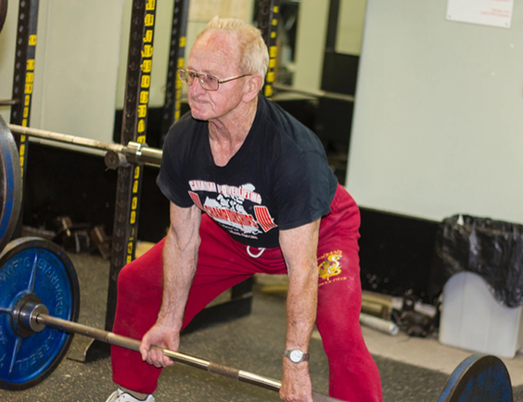

The world records in the 67.5 kilogram weight class weren’t challenging enough for Joe Stockinger, so he ate just enough to move up to the 75 kilogram weight class, and broke those world records instead.
Stockinger, 85, participated in the 100 per cent Raw Powerlifting Western Canadian Championships on June 6 and 7, and came away with three world records.
“You have to religiously, conscientiously, scientifically, work out,” he said.
In the 85 to 89-year-old 75 kilogram class, Stockinger deadlifted 200 kilograms, bench pressed 85 kilograms and squatted 122.5 kilograms, breaking world records in each event. But it’s more than just brute strength, Stockinger said that there is a lot going on behind the scenes both in training and competitions.
Stockinger works out every other day. He takes time out of his workout to visit with other’s using the gym and give pointers and advice. He said that he still struggles with self-motivation but the only way to succeed is to plan ahead and commit. He records the exercises, number of reps and amount of weight he uses during every session in a journal.
At the 100 percent raw contests weight lifters only compete with a belt and single ply clothing, no knee wraps, or powerlifting suits that could assist in any way. Stockinger holds the world records in these events for the 80 to 84 year-old class as well.
Just as important as regularly hitting the gym and planning and recording workouts, is mental preparation, Stockinger said.
“If you’re not mentally prepared, forget it, you’re gone, you’ll fall apart like a card house,” he explained. At a competition, when he is ‘right on’, Stockinger said that everything is perfect from the atmosphere in the gym and the amount of sleep the night before to the warm-up.
“If you don’t warm up properly, you’re not prepared mentally. You have to go there,” he explained.
Stockinger knows his way around a competition. Not only does he hold numerous world records, he is also a qualified referee.
Stockinger started lifting weights in Germany, before moving to Canada in 1954. He took a break while living in Ontario but began training again when he moved west. He didn’t break any world records when he was younger, but came very close.
“I know if I would have had proper coaching and training I would have been much better,” he said.
At the moment Stockinger is preparing to go to the World Championship in Virginia Beach in October. His goal is to lift five more kilograms in each event.
“I can say I have the world records now anyway, do I want more?” Stockinger said.“These are the challenges. That’s the fun, it’s driving you. Can I do it?” – April
Source: https://www.pinchercreekecho.com/2015/07/05/powerlifting-world-records-at-85-years-old
Louise ZoBell
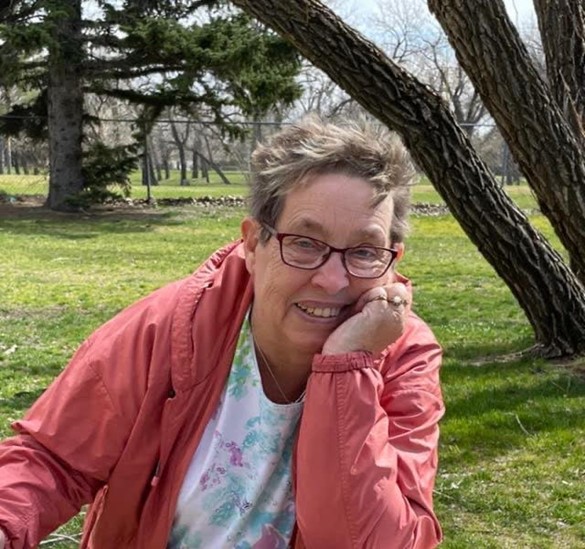
This amazing woman is 71 years old – she doesn’t seem to rest as she eats, sleeps, and breathes to help others, especially the people of Dominican Republic. Louise is the founder and Executive Director of the Dominican Starfish Foundation, which is a registered charity here in Canada that focuses on doing humanitarian work in the country of Dominican Republic.
Louise first went to the Dominican Republic on a vacation. She loved her experience there so much that she bought a timeshare and continued to go back for some R&R (rest and relaxation). However, R&R didn’t last long. Louise has always been a go-getter, and once she started leaving the resort and seeing the great poverty and needs of the people, she could no longer simply rest and relax. She now devote countless hours and energy to help meet the needs of many, many people.
Louise dreams big and accomplishes the unthinkable. Over the past decade Louise has fundraised tirelessly. And she humbly shares the credit with many others, including her God. The foundation has built 250 homes, a school, a library, and a community centre. The foundation also supports education and assists many children and adults to get an education. Her next big dream is to build a Women’s shelter/girls’ orphanage. A recent fundraiser she helped to host and organize raised $150, 000 USD, which brought the reality of the Women’s shelter/girls’ orphanage into view.
I’m so proud of Louise, and so honored to be her daughter. – Bonnie
Iris Apfel

Iris Apfel was born on August 29th, 1921 in Queens, New York. She was an interior designer, business woman, and fashion icon known for flamboyant style, quick wit, and oversized glasses. She was catapulted into fame in 2005 at the age of 85 when the Costume Institute at the Metropolitan Museum of Art asked her to showcase some of her clothing and accessories. The exhibit became a huge success through online promotion from visitors. She playfully gave herself the title of ‘geriatric starlet’
In 2011 she developed a limited edition collection of make-up for MAC Cosmetics. Regarding this she said, “I’m the oldest living broad that ever graced a major cosmetics campaign.”
In 2013 at the age of 92 she listed as one of the fifty best dressed over 50 by British newspaper The Guardian
In 2019 Mattel released a Barbie doll modeled after Iris’s image. She is the oldest person to have a Barbie modeled after her. The same year she also signed a modeling contract with IMG models.
She lived by the mantra, “More is more and less is a bore.” Her unique style brought joy and inspired many people. – Dana S
Source: https://www.worldofinteriors.com/story/iris-apfel-eccentricity
https://www.bbc.com/culture/article/20240302-how-iris-apfel-became-an-icon-in-her-90s
https://www.worldofinteriors.com/story/iris-apfel-eccentricity
https://www.bbc.com/culture/article/20240302-how-iris-apfel-became-an-icon-in-her-90s
Kenojuak Ashevak
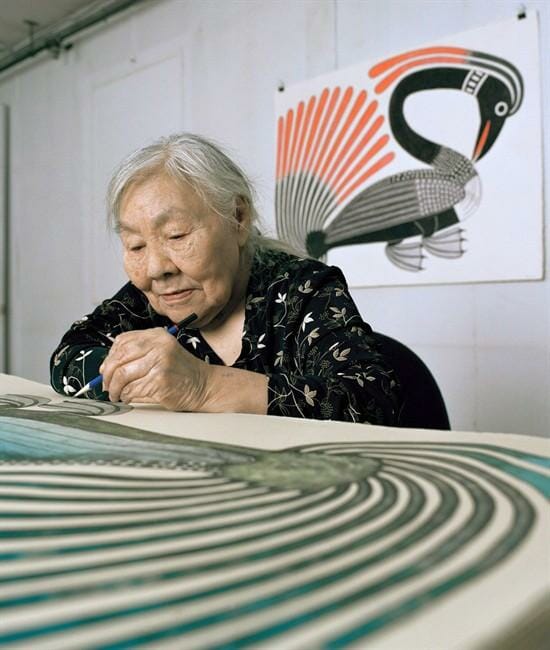
Kenojuak Ashevak is recognized as one of the most notable pioneers of modern Inuit art. She focused her work mainly in print, but also explored other mediums such as blanket work, stained glass pieces and wood carving. Her artwork focused on depicting natural beings, especially birds, in bold, simple forms. Ashevak rose to prominence in the 1960s and quickly gained international recognition. She continued producing works up until her death in 2013, with much of her career’s acclaim coming in older adulthood. She received honorary degrees from both the University of Toronto and Queen’s University. In 1967 Ashevak was awarded the Order of Canada and a Companion of the Order of Canada in 1982. Ashevak was awarded the Governor General’s Award in Visual and Media Arts in 2008 and the Order of Nunavut in 2012. A Canadian Heritage Minute was released in 2016 featuring Ashevak, the first to be presented in English, French and Inuktitut. Ashevak’s work (Owl’s Bouquet) was featured in 2017 on the commemorative Canada 150 $10 bill. Her work continues to be exhibited in galleries and museums internationally. – Katie W
Source: https://steinbruecknativegallery.com/kenojuak-ashevak/
Bea Arthur

Throughout her television stardom, [Bea] Arthur had close friendships and connections with gay men in Hollywood. Her son remembered parties at their house with celebrities like Rock Hudson. Those connections with gay men—and The Golden Girls’ status as a queer-friendly show—led her to political activism. In 2005, Arthur heard from a friend that the Ali Forney Center, an organization for homeless LGBT youth in New York City, was facing financial hardship. Arthur flew from Los Angeles to New York to mount a benefit performance of “Bea Arthur on Broadway,” raising $40,000 for the center and helping to get it through the recession of the 2000s. Arthur left $300,000 to the center in her will, which opened an eighteen-bed shelter, the Bea Arthur Residence for LGBT Youth, in 2017.
Despite her continued identification with the theater in the 2000s, it was clearly television audiences that most warmly embraced Bea Arthur’s “strong women,” and it was through television that Arthur most influenced American culture. On Maude, Arthur helped break down television barriers and normalize topics like abortion and alcoholism as subjects for open discussion; on Golden Girls, the characters openly addressed female sexuality, transgender identity, and HIV/AIDS. Perhaps even more importantly, Arthur’s distinctive portrayals of Maude and Dorothy challenged and reshaped Americans’ conceptions of women and gender. The sharp-tongued hero who does not conform to cultural standards of youthful beauty or wifely duty but who holds herself tall and speaks her mind has been a rarity in American popular culture. Bea Arthur embodied this rarity and helped to usher in a new culture more open to challenging gender stereotypes and embracing divergent sexual identities.
Arthur passed away on April 25, 2009, at the age of 86. – Tyler
Source: https://jwa.org/encyclopedia/article/arthur-bea
Nola Ochs
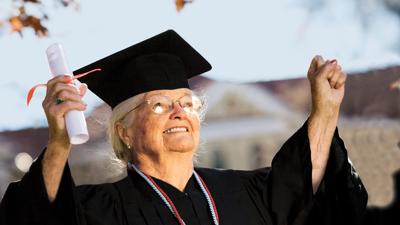
Nola Ochs was born in Kansas in 1911, one year before the state amended the constitution to recognize women’s right to vote. Back then, Kansas was a patchwork quilt of counties traversed by roads and railroad tracks all converging in Kansas City. A sea of wheat rolling across the plains would later inspire the lyric “amber waves of grain.” There were farms and more farms, and everybody had a job to do.
Nola Ochs was raised under the endless sky, and the long arc of the sun marked her chore-filled days. Her life was not extraordinary by most measures. She grew and married, had children and grandchildren, taught in rural schools, and lived the quiet Midwest life. But she got her associate degree at age 77.
“I still wanted to go to school. It was fun to go to classes. And if I had an assignment to do in the evening, that occupied my time in a pleasant way,” she recalled.
After some years went by, Nola again got the bug to learn. She emailed an academic adviser at Fort Hays State University in Hays, Kan., mentioning that she had taken a course from the university years earlier. After some digging, the adviser located a 3-inch-by-5-inch card stored in the basement of the administration building stating that Nola had indeed been a student, in 1930. When the adviser emailed back, she asked, “Nola, how old are you?”
Learning takes time, and moving through courses must be done on your own time, at your own pace. When Nola had 30 hours of school left to complete, she moved 100 miles away from her farm, got an apartment and attended classes in person. She graduated with her granddaughter in 2007.
Nola could have been finished then with her long life of learning. She was, after all, 95 years young. “I don’t dwell on my age,” Nola said back then. “It might limit what I can do. As long as I have my mind and health, it’s just a number.”
Nola decided to keep going. She lived in the student dorms and got her master’s degree in liberal studies with an emphasis on history three years later, at age 98.
What keeps us young is not comparing ourselves to others. It is not the latest health craze. What keeps us young is a passion for learning everything we can about the world we live in. It’s about seeing everyone we meet as a teacher, knowing they have something worthwhile to offer. Nola lived a long and productive life, but her work was still not done. As the sun bent its great arc across the sky, Nola was at work, plowing the fields of her mind, harvesting the best bits into a memoir.
A hundred years yields a lot of wisdom. But it’s the process that can teach us all. Learn everything you can. Share your crops with the neighbors. And never, never give up on yourself. At 105, Nola finished her memoir. – Diane
Source: https://gazette.com/life/nola-ochs-went-back-to-college-at-95-at-100-she-had-earned-her-bachelor/article_df04a732-63b2-11ee-85c5-0f65ede7d868.html
Jack, Sam and Marlene Thompson
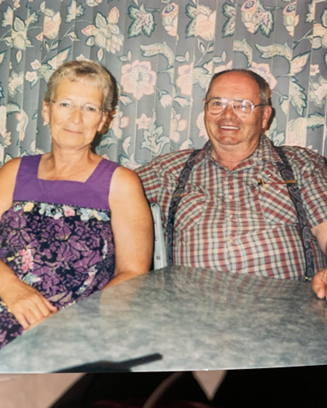

My grandparents have always emphasized the importance of family. My Grandpa Jack and Grandma Sam, pictured first, have always been there to support my large extended family, and ensure everyone always knew they would never be left without help or support. I have always known that I have a place to turn to, a family to support me or a place to go if I needed. After my Grandma Sam’s passing, my grandpa remarried my Grandma Marlene. Together, always with Grandma Sam in mind, they have continued to ensure our family is a place where not only biological family members can go to for help and support, but friends who have become family, or strangers who need to be picked up. Because my grandparents have always instilled inclusion and the importance of loving thy neighbor, my aunts, uncles and mom have passed down the same messaging to myself, my brother and my cousins. I am so proud to be a part of a family that is helpful, loving and inclusive. My Grandma Sam always said, “Offer it up!” serving as a constant reminder to always help where you can because the impacts of giving are longstanding. – Amy C
Julia Child
/https://tf-cmsv2-smithsonianmag-media.s3.amazonaws.com/filer/Julia-Childs-Kitchen-631.jpg)
My love of cooking started early and I would spend hours going through my mothers cookbooks and trying new recipes. Two of my favorite cookbooks were Julia Child’s Mastering the Art of French Cooking. I learnt how to cook french onion soup, beef stew, and roast chicken from her. Julia is an icon when it comes to celebrity chefs.
The famously adored chef, author, and television personality is a familiar name in the homes and hearts of Americans to this day. But, she wasn’t always known for her delicious recipes and humorous dialogue.
After working in media and advertising, Julia decided to learn how to cook while living in France. She turned her newfound hobby into a trailblazing career – not without hitting some major bumps in the road.
Julia published her first cookbook at 50 years old. Then, she turned into a celebrity chef with her own TV show. She also became the first woman to be inducted into the Culinary Institute of America’s Hall of Fame. – Dannie
Source: https://vantageaging.org/blog/success-later-in-life/
Yul Kwon
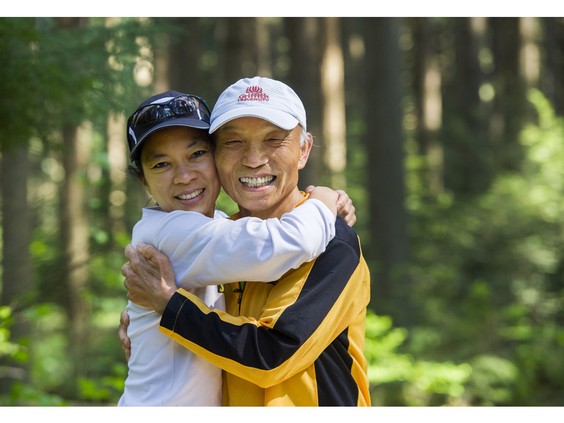
A lot of us set goals like eating more vegetables or watching less TV, but 80-year-old Yul Kwon aims to have the body of someone 20 years younger — and he’s done it. The trim former business professor has run more than 30 marathons and an equal number of half-marathons since he took up the sport 20 years ago with this daughter.
“I’ll keep it up until I collapse,” Kwon said Wednesday before a short training run near the University of British Columbia with his daughter, Dr. Janice Kwon, a surgical oncologist in Vancouver. “I haven’t been injured,” he says of his brilliant, if belated, running career. “Running and training for a marathon is not that risky.” His daughter also has a theory: “He didn’t start running competitively until his 60s so his joints are well-preserved.” Kwon will be among a select group of 50 athletes over the age of 70 at this year’s BMO Vancouver Marathon, according to organizers. More than 1,000 over-60 competitors are signed up. The smaller size of the age category means Kwon can keep an eye on his competition. In Boston, he made sure no one wearing an “80+” on their running bib passed him.
His daily routine includes 100 sit ups and 100 push ups, as it has for decades. It takes commitment to get out the door, he says, but the thrill of running and winning appeals to his nature. Kwon and his wife Joanne say they never could have dreamt of coming to Canada without the scholarships they received decades ago. One of the reasons he is running two marathons in less than a month is to raise money for the Kwon Family Scholarship created in conjunction with the Vancouver Korean-Canadian Scholarship Foundation. – Camille
Reference: Retired 80-year-old professor to run the BMO Vancouver Marathon | Vancouver Sun
Marjorie Machen-Brouwer (Marj in Charge)

I first met Marjorie in 2014 when working at a fitness facility and instantly was drawn to her magnetic personality. In her early 40s she was a model, fitness leader, personal trainer, and triathlete.
In December 2008 she was on a cycle ride training for an ironman ibn Texas when she was hit by a distracted driver texting while driving and it changed her life forever. The accident resulted in a spinal cord injury – she has no feeling from the chest down and has limited use of her arms and hands.
A few years after her accident, she came back to the YWCA 3 days per week to ride a wheelchair accessible bike for 70 minutes. Later, she began leading spin classes at the YWCA fitness center. She came as a keynote speaker for 2016 Power of Being a Girl conference sharing her story and inspiring youth on overcoming obstacles. She is an advocate for individuals with limitations and disabilities. In August 2024 she held an art show to sell her paintings.
She refuses to live her life as a victim and hopes to inspire others.
I am blessed to know Marjorie and call her a friend. – Andrea
Source: https://www.youtube.com/watch?v=O47Q3rKii3s
David Suzuki

Someone who I find to be quite inspiring is David Suzuki. As a renowned environmental activist, geneticist, and broadcaster, he has dedicated his life to advocating for sustainability and raising awareness about climate change. Through his work, particularly with the David Suzuki Foundation, he has been a tireless champion for environmental protection, focusing on the urgent need to address climate issues.
Even in his eighties, Suzuki remains active, speaking out on critical issues and engaging with younger generations to inspire them to take action for the planet. His passion for nature and commitment to social justice has made a profound impact on environmental policy in Canada and beyond. Suzuki’s ability to blend scientific insight with compelling storytelling has educated countless individuals about the importance of protecting our ecosystems.
His legacy is a powerful reminder that it’s never too late to make a difference and that age should not be a barrier to activism. Suzuki’s unwavering dedication continues to inspire people of all ages to work toward a more sustainable and equitable world. – Marissa



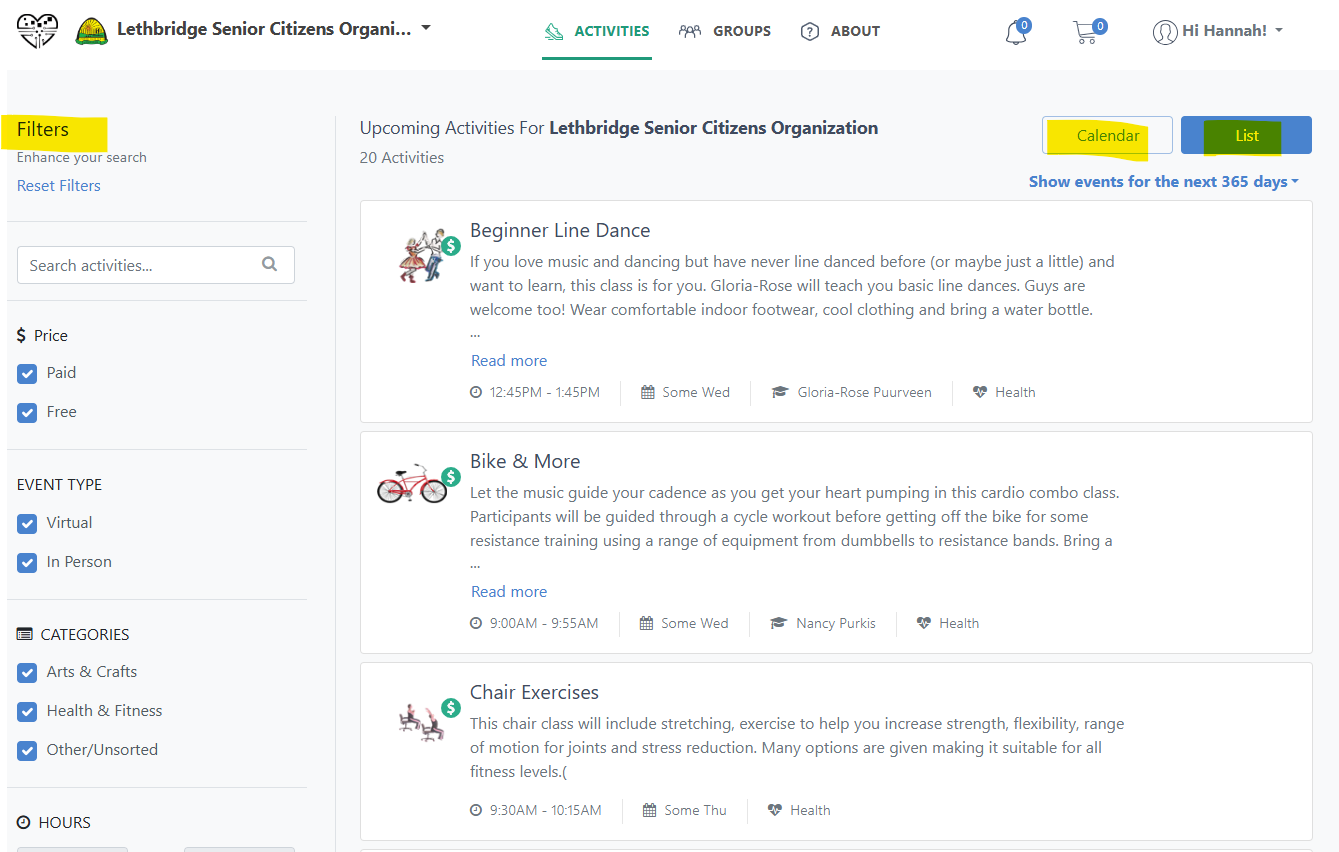





















/https://tf-cmsv2-smithsonianmag-media.s3.amazonaws.com/filer/Julia-Childs-Kitchen-631.jpg)


